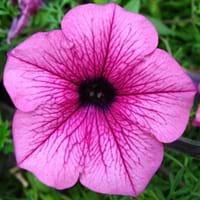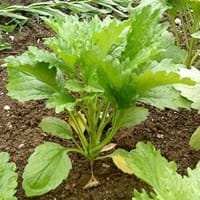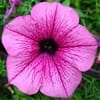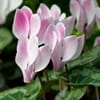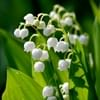Type
Flowering Plants, Shrubs
Flowering Plants
Origin
South America
China
Types
Grandiflora Petunias, Multiflora Petunias, Wave Petunias, Superbell Petunias, Supertunia Petunias
Ribbon series, Milady aster
Number of Varieties
Not Available
Habitat
Terrestrial
Cold Regions
USDA Hardiness Zone
9-10
3-9
AHS Heat Zone
Not Available
9 - 1
Sunset Zone
not provided
1a, 1b, 2a, 2b, 3a, 3b, 4, 5, 6, 7, 8, 9, 10, 11, 12, 13, 14, 15, 16, 17, 18, 19, 20, 21, 22, 23, 24
Habit
Not Available
Upright/Erect
Flower Color
Blue, Pink, Purple, Red, White, Yellow
White, Yellow, Purple, Pink, Rose, Crimson, Blue Violet
Flower Color Modifier
Not Available
Bicolor
Fruit Color
Not Available
Not Available
Leaf Color in Spring
Golden Green
Green
Leaf Color in Summer
Green
Green
Leaf Color in Fall
Green
Green
Leaf Color in Winter
Green
Light Green
Leaf Shape
Ovate
Arrowhead
Plant Season
Summer
Spring, Summer, Fall
Sunlight
Full Sun, Partial shade
Full Sun, Partial shade
Type of Soil
Loamy, Sandy
Loam, Sand
The pH of Soil
Neutral
Acidic, Neutral
Soil Drainage
Well drained
Well drained
Bloom Time
Fall, Spring, Summer
Early Summer, Summer, Late Summer, Early Fall, Fall, Late Fall
Tolerances
Pollution
Drought
Where to Plant?
Container, Ground, Pot
Container, Ground
How to Plant?
Seedlings, Transplanting
Seedlings
Plant Maintenance
Medium
Medium
Watering Requirements
Keep the ground moist but not water-logged, Requires regular watering, Requires watering in the growing season
Do Not over Water, Keep ground moist, Never Over-water, Requires a lot of watering, Requires regular watering
In Summer
Lots of watering
Lots of watering
In Spring
Moderate
Moderate
In Winter
Average Water
Alternate Days
Soil pH
Neutral
Slightly Acidic
Soil Type
Loamy, Sandy
Loamy, Well drained
Soil Drainage Capacity
Well drained
Loamy, Well drained
Sun Exposure
Full Sun, Partial shade
Full Sun
Pruning
Cut or pinch the stems, Do not prune during shooting season, Remove dead or diseased plant parts, Remove deadheads
Cut or pinch the stems, Remove damaged leaves, Remove dead branches, Remove dead leaves
Fertilizers
All-Purpose Liquid Fertilizer
Compost, Well-rotted manure
Pests and Diseases
Aphids, Bacterial Blight, Caterpillars, Gray mold, Leaf spot, Powdery mildew, Root rot, Spider mites, Thripes, Verticillium Wilt, Viruses
fungus
Plant Tolerance
Drought
Drought
Flower Petal Number
Not Available
Single, Double, Semi-Double
Fragrant Bark/Stem
Yes
No
Foliage Texture
Medium
Medium
Foliage Sheen
Matte
Matte
Attracts
Butterflies, Hummingbirds
Not Available
Allergy
Not Available
Asthma
Aesthetic Uses
Beautification, Bouquets, Showy Purposes
Beautification, Bouquets, Hanging Basket, Landscape Designing, Showy Purposes
Beauty Benefits
Not Available
Not Available
Environmental Uses
Air purification
Air purification, Food for insects, Versatility, Very little waste
Medicinal Uses
Not Available
Rheumatism
Part of Plant Used
Flowers
Flowers
Other Uses
Showy Purposes
Decoration Purposes, Employed in herbal medicine, Showy Purposes, Used as Ornamental plant
Used As Indoor Plant
Yes
Yes
Used As Outdoor Plant
Yes
Yes
Garden Design
Bedding Plant, Container, Edging
Bedding Plant, Container, Cottage garden, Rock Garden, Showy Tree
Botanical Name
Petunia
CALLISTEPHUS chinensis
Common Name
Petunia
China Aster
In Hindi
Petunia
चीन एस्टर
In German
Petunie
China Aster
In French
Pétunia
Chine Aster
In Spanish
Petunia
aster de China
In Greek
πετούνια
Κίνα Aster
In Portuguese
Petúnia
China Aster
In Polish
Petunia
Chiny Aster
In Latin
Petunia
Sinis Aster
Phylum
Streptophyta
Magnoliophyta
Class
Magnoliopsida
Magnoliopsida
Order
Solanales
Asterales
Family
Solanaceae
Asteraceae
Genus
Petunia
Callistephus
Clade
Angiosperms, Asterids, Eudicots
Angiosperms, Asterids, Eudicots
Tribe
Not Available
Astereae
Subfamily
Petunioideae
Asteroideae
Importance of Petunia and China Aster
Want to have the most appropriate plant for your garden? You might want to know the importance of Petunia and China Aster. Basically, these two plants vary in many aspects. Compare Petunia and China Aster as they differ in many characteristics such as their life, care, benefits, facts, etc. Every gardener must at least have the slightest clue about the plants he wants to plant in his garden. Compare their benefits, which differ in many ways like facts and uses. The medicinal use of Petunia is Not Available whereas of China Aster is Rheumatism. Petunia has beauty benefits as follows: Not Available while China Aster has beauty benefits as follows: Not Available.
Compare Facts of Petunia vs China Aster
How to choose the best garden plant for your garden depending upon its facts? Here garden plant comparison will help you to solve this query. Compare the facts of Petunia vs China Aster and know which one to choose. As garden plants have benefits and other uses, allergy is also a major drawback of plants for some people. Allergic reactions of Petunia are Not Available whereas of China Aster have Asthma respectively. Having a fruit bearing plant in your garden can be a plus point of your garden. Petunia has no showy fruits and China Aster has no showy fruits. Also Petunia is flowering and China Aster is not flowering . You can compare Petunia and China Aster facts and facts of other plants too.
